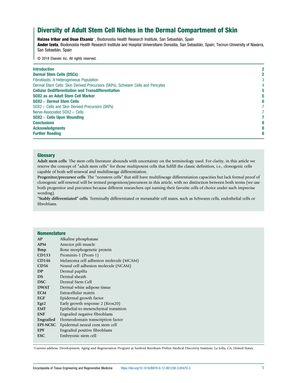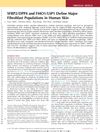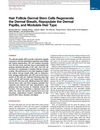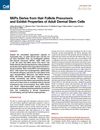Diversity of Adult Stem Cell Niches in the Dermal Compartment of Skin
January 2018
in “
Elsevier eBooks
”

TLDR The skin's dermal layer contains true stem cells with diverse functions and interactions that need more research to fully understand.
The document from January 1, 2018, explores the complexity of adult stem cell niches in the skin's dermal compartment, particularly focusing on dermal stem cells (DSCs), fibroblasts, and their heterogeneity. It confirms the presence of true stem cells in the dermis, specifically mouse hair follicle-associated Sox2+ DSCs, and discusses the dynamic nature and functional distinctions of fibroblasts based on location. Advances in single-cell RNA sequencing have furthered the understanding of fibroblast diversity and their role in tissue repair. The document also examines the potential of pericytes and other cells associated with hair follicles, nerves, and blood vessels in the context of dermal stem cells, while cautioning that some differentiation potentials may be overstated due to in vitro artifacts. Additionally, it delves into the role of SOX2 in regulating neural differentiation potential and the reversible cellular plasticity between Schwann cells and pericytes. The importance of SOX2+ cells in maintaining stem cell pools in the skin is highlighted, with a focus on their involvement in hair follicle development, wound healing, and nerve regeneration. The document concludes that while the role of HF-associated DSCs in mice is clear, their contribution to human skin biology and their interactions with other cell types require further study. The term "skin-derived precursor cells" (SKPs) is considered outdated, and the relationship between pericytes and dermal stemness, as well as their connection to Schwann cells, is acknowledged as uncertain, necessitating future research.












